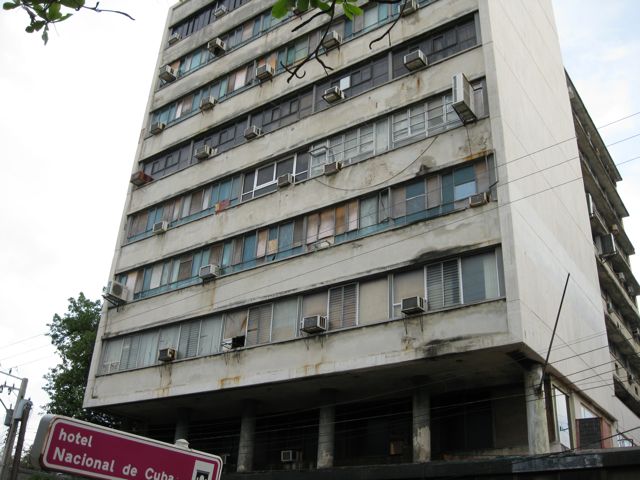Day One: Hales Group in Cuba
Our first day of travel was filled with contrasts. Cold, dark, and rainy in Toronto this morning and, just a few hours later, hot, bright and . . . well, okay it was raining in Havana, too. We had some visa issues (that are still in the process of being resolved) that kept us in immigration for 2+ hours, so even more rain was welcomed, as was getting out of the airport and into Havana.
Once we were out of the airport, our bus wound its way through the countryside, past ramshackle stucco, barred windows, banyan trees, fences. Along the way, we were passed by ’48 Plymouths, ’57 Super Chiefs, and so many ’56 Fords, the ancient cars I had read about in National Geographic and Smithsonian. As I watched them come and go, they were off just a bit, not quite right. The closer I looked, the more I recognized that these were not the cars imported to Cuba 50+ years ago. These were something else, something new, adaptations of those familiar fins and fenders. But these were not the only things on the road. Bare with me for a moment longer—there really is a point that is not just about cars.
There were shiny new Volvos and Toyotas, too, and the Russian Ladas, Fiats, Renaults, Volkswagens, Hino trucks, Cuban army jeeps—and lots and lots of buses, filled to the brim with locals and touristas. My ideas of Cuba as an isolated relic of the Cold War had some traction—huge statues, stars and sickles, the faces of Lenin, Marx, Marti, Guevara, Castro. Some of the buildings looked like an East German city just before the wall came down (or so I imagine), but closer inspection showed rundown buildings of varying age and design coexisting and serving so many purposes for which they were clearly not designed. There is the basement apartment across the street from our hotel that clearly used to be a garage. A number of buildings had been built for much more official purposes, with high arches and stucco crests, now apartment buildings. The restaurant where we dined tonight was clearly someone’s living room. There is an ancient fort across the way from beleaguered high-rise hotels that the ‘70s seem to have forgotten.
But, Havana moves; it sings; it flows. It is a city that draws on the entire world, pulls that world into its own unique orbit. It is a city that makes do and makes new. It is a city that, at this point, is so much more than what I had imagined.
Bill Macauley





